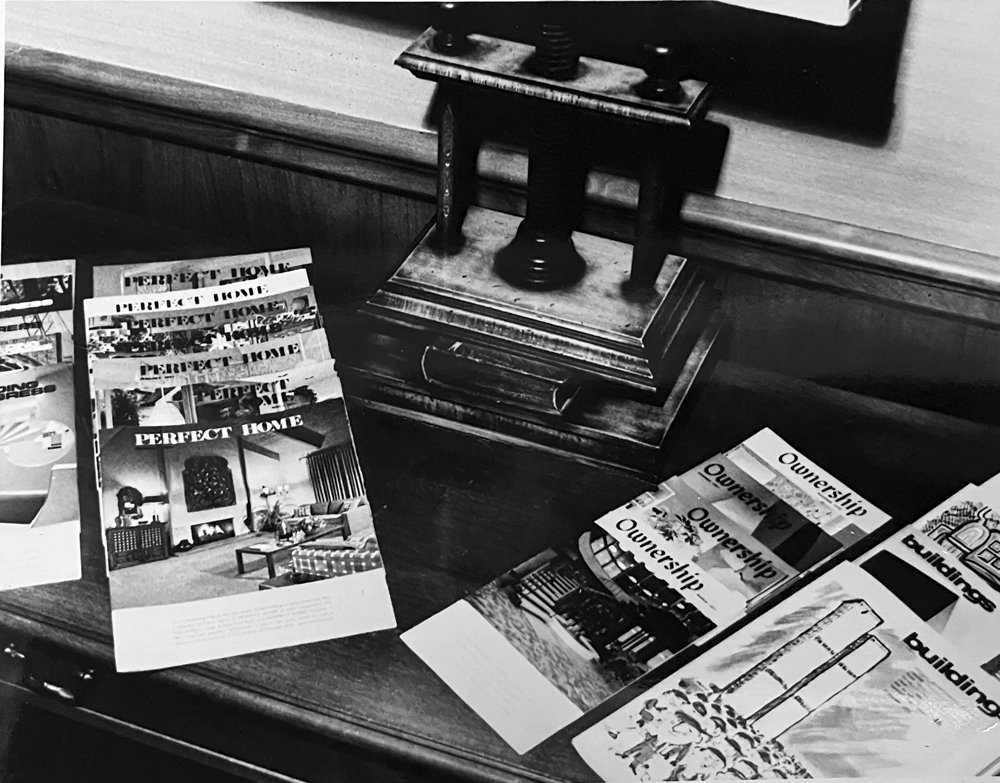
Bill Stamats
November 1, 2023

Thirty years in business and the plan put in place by the company’s two founders, Frank French and Herbert Stamats, continued to achieve high levels of accomplishment and success nationwide. This decade exhibited major expansion in an already successful market and the introduction of a new business line flourishing to this day.
Homeownership and commercial building increased dramatically following World War 2. That escalation created the opportunity for growth in Stamats Publishing Company’s syndicated publications business.
Syndicated publication services involved a local salesman personally approaching a qualified home builder or real estate agency offering exclusive or limited rights to sponsor a publication within their local community. With their logo imprinted on the front cover, these sponsors would offer each monthly magazine to a carefully selected list of influential people as a gesture of goodwill. In effect, that publication became each sponsor’s own publication in their locality. Each issue of every publication was edited, designed, printed, and distributed from the editorial offices and printing facility of Stamats Publishing Company. At one point, Stamats sent the largest amount of mail of any company in Cedar Rapids.
The most successful syndicated publication during this decade was Perfect Home, first published in the 1930s. Ownership, a single-sponsored program for realtors, was first introduced in 1953 and became an almost overnight success. Building Progress, a co-sponsored service for general building contractors started in 1959 and showed steady growth with tremendous sponsor loyalty in its first decade.
There were a few experiments in the syndicated field that did not pan out. However, these calculated risks still served a useful purpose—providing an opportunity for the creativity necessary for any business growth.
“During the 1950s, Stamats Publishing Company employed as many as 39 local salesmen nationwide,” said Stamats President and CEO Peter S. Stamats. “And it really was only men in those days. The advent of women selling Stamats’ services did not transpire until the mid-1970s.“
In the 1962 internal publication, Among Ourselves, Stamats Publishing President Herbert Stamats expressed the company’s commitment to and expectation of their sales force. “The greatest possible effort will be put into finding and training productive field representatives. We will continue to expect the best from our highly skilled craftsmen so that our publications will always have unequaled quality.”
During this decade, Stamats added more sophisticated, high-speed offset presses, expanding the company’s services into providing high-quality printing for business and institutional clients.
In 1958, printing services salesman Larry Zirbel suggested Stamats take advantage of the company’s high-quality print capabilities by approaching colleges and universities, first in Iowa and then nationally. Larry was already successful in Cedar Rapids, selling the high-quality printing services Stamats was known for. His idea to expand into a new business area began with personal visits to local colleges where contracts were finalized with a handshake.
Larry knew our in-house staff of skilled editors and artists could apply their talents to any of our customers’ needs. Consequently, Stamats began editing, designing, and producing college magazines, viewbooks, brochures, fundraising materials, and catalogs for the higher education market. With the new work came new rewards. Stamats-produced college materials began winning awards in regional and national competitions.
Related reading: 1963-1973: The Decade of Transition
From its very beginning, strong writing and skilled teams were an underpinning of Stamats’ success. “Founders French and Stamats wrote their own content,” said Peter Stamats. “They focused on writing meaningful, high-quality pieces, and not ‘fluff,’ which was a Herbert Stamats pet peeve.”
The Stamats Publishing Company offices were modernized in the late 1950s. The renovation of the company headquarters transformed the offices into “one of the business showplaces of Iowa,” according to a 1957 article in the Cedar Rapids Gazette.
“At this juncture, we can make no promises or prophecies for the year ahead. We only know that each of us, using our heads, our ingenuity, and continuing to work well together, will make healthy progress inevitable.”
Herbert Stamats, December 1962